§
#https://woodclinched.com/2015/07/05/napkin-prima-review
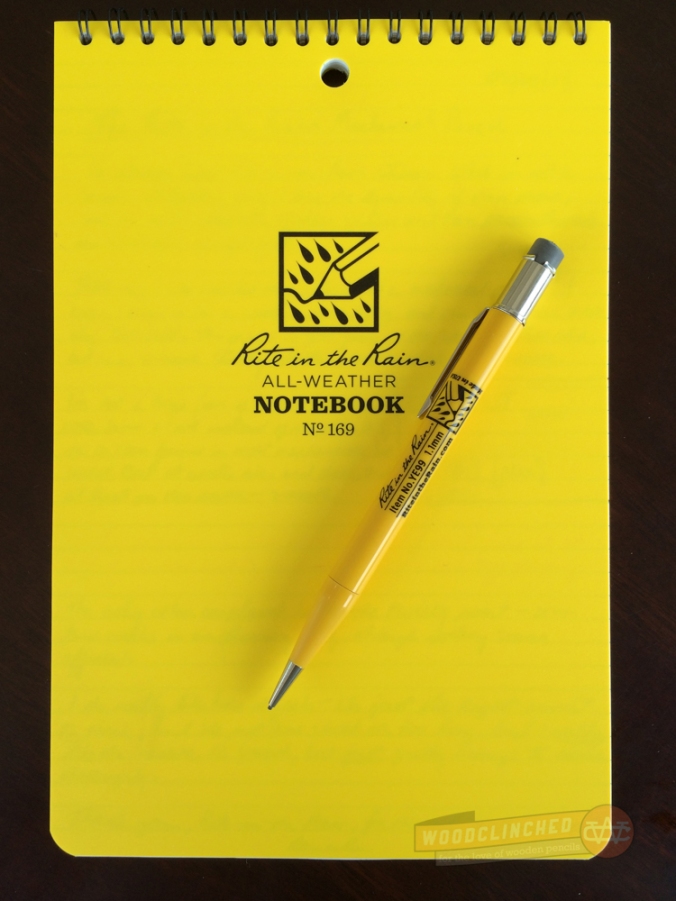
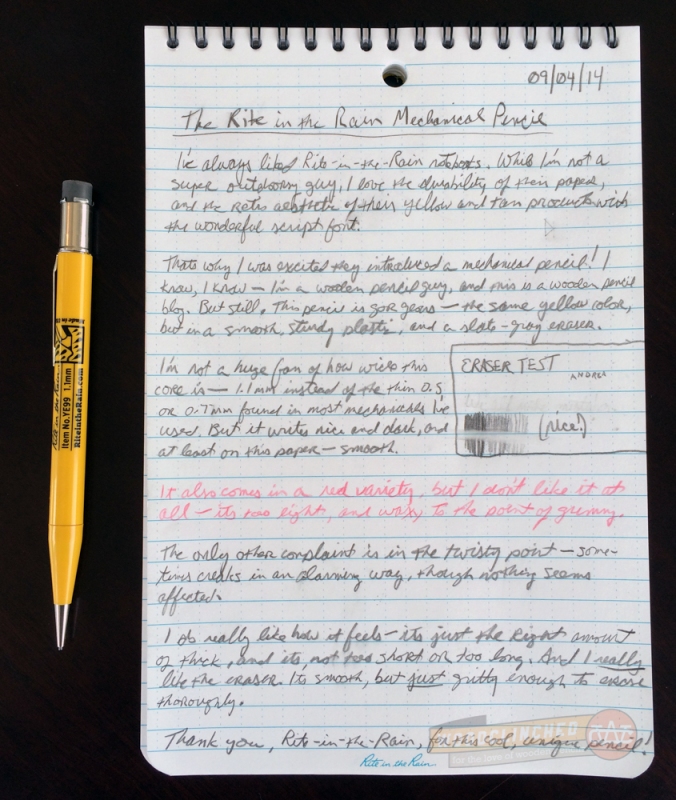



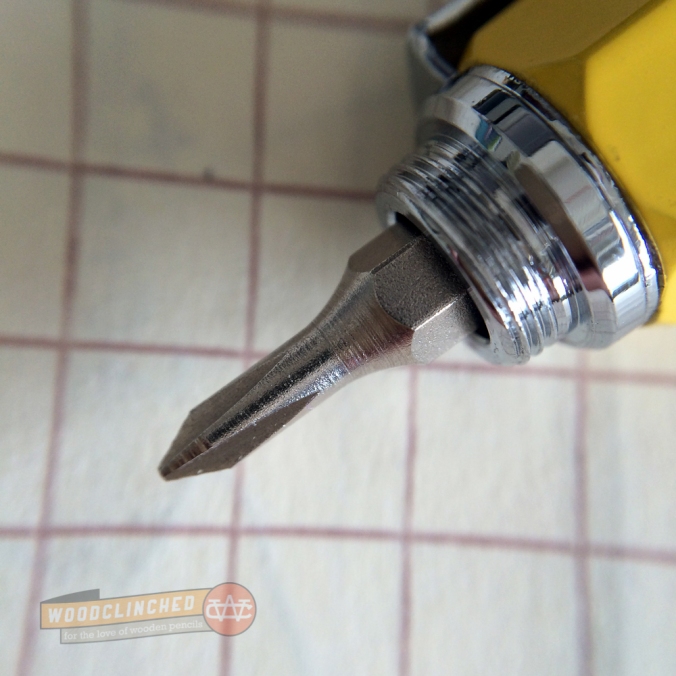


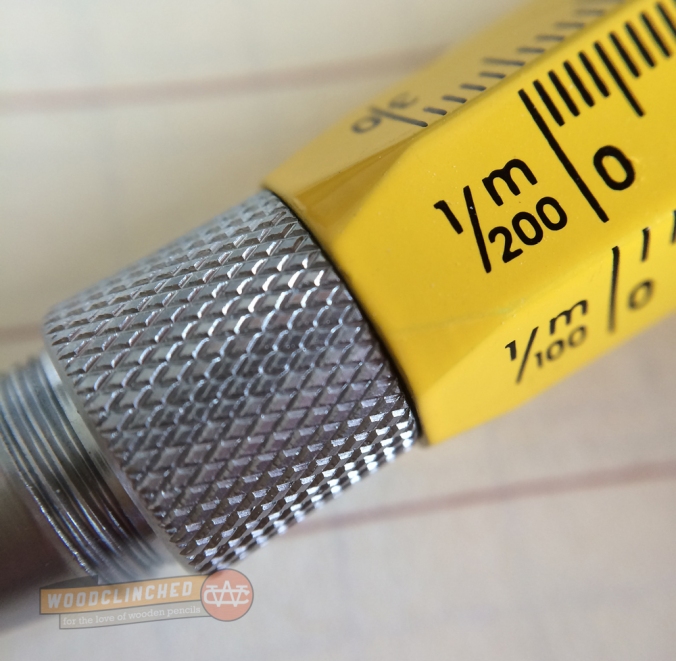
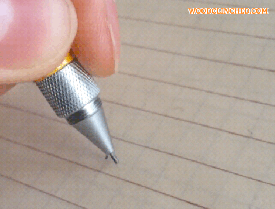

 I’ve had my Baron Fig Confidant for a little over a month now, and it’s definitely taken me this long to really figure out how I feel about it. In that time, I’ve gone from glee, to disappointment, and back to a medium-to-high-grade satisfaction. I think I’m ready to discuss it now. Meanwhile, there are a bunch of bloggers out there who have posted reviews much earlier than I have. Here’s just a partial list:
I’ve had my Baron Fig Confidant for a little over a month now, and it’s definitely taken me this long to really figure out how I feel about it. In that time, I’ve gone from glee, to disappointment, and back to a medium-to-high-grade satisfaction. I think I’m ready to discuss it now. Meanwhile, there are a bunch of bloggers out there who have posted reviews much earlier than I have. Here’s just a partial list:


 I came to the conclusion that it’s the dot grid. I can’t use a blank page for writing without some sort of guide, because my hand wanders all over the page. Both the lined and the gridded paper keeps my writing in check by giving my hand a literal baseline to follow. The dot grid only kinda sorta did that.
I came to the conclusion that it’s the dot grid. I can’t use a blank page for writing without some sort of guide, because my hand wanders all over the page. Both the lined and the gridded paper keeps my writing in check by giving my hand a literal baseline to follow. The dot grid only kinda sorta did that.



#https://woodclinched.com/2015/07/05/napkin-prima-review
If neither pencil nor pen, then what is it? Reviewing the Napkin Prima
Pen Chalet is such a cool online shop. I wish I could give them more love on this blog than I do. But, alas, there are far better fountain pen reviews on other blogs than I could provide, and Pen Chalet is really intended for the fountain pen and finer rollerball market. Wooden pencil blogs lie pretty far outside that market.
I did write about this mechanical pencil, but other than that, there isn’t much I can rightfully cover on this blog.
Here’s something cool they just started carrying recently — something I’ve been wanting to try for a while. It’s often called a “forever pencil”, though that’s kind of a misnomer.
This chopstick-looking thing is called a Prima, made by an Italian company called Napkin. Pen Chalet sells writing utensils in three varieties that writes in a pretty unique way. This is the budget option, at $49.
According to the Napkin brand page on Pen Chalet’s site, it writes “using oxidation when it contacts paper. This leaves a unique mark different from a pen or a pencil and the tip lasts forever.”
From the way this is worded, it’s unclear whether or not:
- The alloy tip oxidizes the paper on contact,
- or an oxidation forms on the tip, and rubs off when it makes contact with the paper.
Keith McCleary is a chemist, and a lister of the Erasable Podcast. He’s pretty active in our fantastic Facebook group and when we were discussing how the Napkin products work, he postulated the latter, that the alloy quickly oxidizes and rubs off onto the paper. He thinks the tip could be made from a blend of lead, tin and possibly bismuth, all of which have black oxides.
What’s fascinating to me is that, if this is true, it can oxidize fast enough to continuously generate rust to rub off as you’re writing. Keith confirms — that the combination of heat from friction and air can cause that reaction instantly.
So is this thing a pencil? Or a pen? I think it’s still up in the air. It doesn’t leave bits of itself behind to write like a pencil, but it also doesn’t distribute a medium that introduces pigment to a surface, like a pen. It causes a chemical reaction that rubs off to make a mark. It’s a science pen!
Ergonomics and aesthetics
Visually, the Prima is striking. It’s long and skinny, and it gently tapers to a point. The other two products in the Napkin line carried by Pen Chalet are also striking, through in completely different ways.
There’s the $59 cigar-shaped Cubanwith a round, blunt tip intended for drawing and shading.
And, at $119 (more than twice the price of the Prima), the Pininfarina Cambianois (in my opinion), the handsomest and most ergonomically friendly. Its tip seems to be about the same fineness as the Prima, though I admit I’ve never tried this or the Cuban.
The Prima itself comes in aluminum, anodized in seven colors — mine is “Airforce Blue”. It’s just over seven inches long — slightly shorter than an unsharpened Palomino Blackwing — but also much thinner at the writing end than a typical pencil. It’s perhapstoo thin to effectively hold and write with. If I could hold it at the opposite end, it would be perfect.
Performance
Roger Ebert is said to have reviewed movies based on, not what they are, but if they accomplished what they were trying to be. That’s why he gave good reviews to so many bad movies — they weren’t trying to be some seminal works of art. They were just trying to be mindless diversions. And they were.
That said, I’m no Roger Ebert, but I do try to emulate review process. Should I compare the Napkin Prima to, say, a Palomino Blackwing, or a nice smooth rollerball pen?
I don’t think the Prima is trying to be either. From their website:
Different from all other writing and drawing tools, the mark is achieved by oxidation, due to contact between tip and paper. So the mark left is very particular, it seems like a pencil but it cannot be erased like a pen, and this makes our writing tool unique in the world.
So here’s my conundrum: the Napkin products are “unique in the world,” so how do I tell if they’re good or not?
For my particular use case, it’s not ideal. It lays down a light mark, lighter than a 3 or 4H pencil, and it’s not smooth to write with, even it is just a metal tip. The tip is slightly sticky and laggy while it slides across the page.
After trying it on several kinds of paper, the best kind to use it with is something more toothy than smooth. Think Ampad, rather than Rhodia.
After a tip from Chris Rothe, the proprietor of Write Notepads (and a guest on Episode 30 of Erasable), I tried the paper in a Write pad. It was indeed noticeably better than the other papers I’ve tried. Just as toothy paper grabs more graphite than smoother paper, it seems to grab more oxidization from the Prima, leaving a darker mark.
(Chris, in fact, loves his Pininfarina — he uses it every day to write thank-you notes to those who place orders with him.)
So, what is an ideal use-case for a Napkin product?
I’m just not sure. If you love the novelty and the lack of maintainance that this brings — you never need to sharpen it, refill it, or as far as anyone knows, replace it — it’d be perfect for you. You can write and write and write, and you’ll run out of paper before you run out of Prima.
But personally, I like being able to switch it up a bit. When my pencil is running out, I can switch to a new one. Same thing with pens, though admittedly I usually lose them before they run dry.
Would I buy a Napkin for myself? Probably not. It’s expensive and the performance just doesn’t rival a nice pencil or pen. Am I glad I have one? Absolutely. It was fun to try out, and dang, it beautiful to look at. It’s a novelty for sure, but I’m sure I’ll bring it out to show someone every now and then.
If you want to try one for yourself, head over to PenChalet.com and pick one up for $49 here.
Disclaimer: I acquired the Napkin Prima from Pen Chalet for review purposes, and paid no money for it. Other than the product, I have not received any financial recompense whatsoever from Pen Chalet.
Advertisements
Rite in the Rain Notepad Paper Review
It’s been a long time since I’ve last posted a video review. But this one just begged for it:
Basically, I took the review page from my Rite in the Rain mechanical pencil review, and a page from one of my favorite notepads, the Ampad Retro Gold Fibre (available online or at Staples), and gave them a good soaking from the hose. Right away, the Ampad paper soaked up the water, became limp, and tore very easily.
The rather more hydrophobic Rite in the Rain paper resisted the water, which beaded up on the surface of the paper. It took just as much effort to tear it as it does a dry piece of paper (even dry, Rite in the Rain is thicker and offers more resistance than most writing pad papers).
I wrote on both sheets of paper with pencil, which is already water resistant. But if you use a fountain pen, especially with normal, water-soluble ink, the Rite in the Rain paper shouldn’t completely protect you from smearing when wet. Since the ink has soaked into the paper somewhat, it should perform better than the regular notebook paper, but still — I like to think pencil performs best under wet circumstances. Especially on a Rite in the Rain notepad.
Thanks to my lovely partner, Katie, for running the camera and the garden hose!
Rite in the Rain Mechanical Pencil Review
I’ve always liked Rite in the Rainnotebooks. While I’m not particularly outdoorsy (I prefer to be called anindoorsman,, like most good bloggers), I love the durability of their paper and the retro aesthetic of their yellow or tan products, and of course, the gorgeous script typeface in their logo.
That’s why I was excited that they introduced a series of mechanical pencils! I’ve always found it a little bit ironic that they have a wooden pencil in their logo, but had no graphite options in the writing equipment they sell.

I know, I know — I’m a wooden pencil guy, and this is a wooden pencil blog. And this product video doesn’t help make the peace:
But still, this pencil is gorgeous, and fits with their market really well. It’s the same yellow, but in a smooth sturdy plastic, and a slate grey eraser. Like their notebooks, they’re inexpensive, but well made. And, I imagine, very durable.

This pencil comes in three varieties — a yellow barrel with black lead, a black barrel with black lead, and a red barrel with red lead.
This pencil was developed along with, and manufactured by Autopoint, which makes sense — it really fits within their wheelhouse. This was a good fit.
I’m not a huge fan of how wide this core is — it’s 1.1 mm instead of the thin 0.5 or 0.7 mm that is often found in mechanical pencils. I can appreciatewhy it’s wider, though — it’s less prone to breakage, and shows up darker if writing bigger. Sure enough, it didn’t snap once when I was testing it.

The graphite was nice and smooth, and dark. Especially on the paper in this Rite in the Rain notebook, it glided across the page.
The red core, on the other hand, was a fairly unpleasant experience — the pigment is way too light (as you can see in the image), and waxy to the point of feeling gummy. It dulled much faster than the graphite core did.
The only other complaint I have about this pencil is the sturdiness of the twisty point. As I’m writing, it sometimes creaks in an alarming way, like I’m stressing the little contraption inside that advances the core when I twist it. Nothing seems to be affected or broken, though, so it may just be a natural result of having two pieces that fit together like that.
I really like how it feels. It reminds me of a Bic Clic, and I hope they don’t take that as an insult. For the price, a Bic Clic is one of the most attractive, best engineered pens I can find. It’s shaped beautifully, performs consistently and admirably, and even though it’s plastic, it’s really high quality. I’ve never seen a flaw in one.
This pencil feel much the same. It’s a little bit thicker than a Bic Clic’s widest segment, and it’s just a little bit longer than the Bic. It feels really nice in my hand, and I imagine if I was someone who had to scribble notes in the rain, it’d be great to hold onto.
I think my favorite part of this pencil is the eraser. I don’t think I’ve seen one like it before — it’s grey, and I was expecting it to be very pumice-like and gritty. It’s not, though. It’s super-smooth, but really effective. It rubs off cleanly, almost like a vinyl eraser.

Sure, I’d like to see Rite in the Rain introduce a wooden pencil. But honestly, it’s no big deal if they didn’t. They produce a great notebook, one that any pencil would work well with. They lent their philosophy to this mechanical pencil — a quality, durable tool for not a lot of money. I think it holds its own really well in their product lineup.
You can buy these mechanical pencils for $10.95 each, and refills for the core and the eraser, on their website. And for that 6×9″ top-spiral-bound notepad I used to review it? It’s $9.95available from their website.
(Disclaimer: These products were given to me, free of charge, for review purposes. Thank you, Rite in the Rain, for these samples!)
UPDATE: A few readers have written to me that that the Autopoint All-American Jumbos are identical and cheaper. I don’t know if they are identical, and the RiR pencils are merely privately labeled, or if there are manufacturing differences/improvements. I intend to get an Autopoint-branded pencil and check it out. So in the meantime, I’d recommend that you hold off on your purchases of either.
The Gallery Leather Oporto Journal, reviewed
Prologue: Apparently Johnny Gamber and I are on a similar review circuit — he just posted a review yesterday! Be sure to check it out at Pencil Revolution for much better pictures.
Disclaimer: I received this product free of charge from Gallery Leather for review purposes.
There was a period of four or five years back in my pre-iPhone, post-collegiate days where I religiously used a weekly planner. In fact, I had a yearly ritual to usher in the new calendar year: After the first week of January, I’d go into Barnes & Noble or Borders, walk straight over the journal aisle, and page through the weekly planners.
It was an intensive process, and I had a whole list of requirements. In fact, back in 2007, I wrote it all out on 43 Folders:
- Needs to be in the 5.5” x 8.5” range – slightly bigger or smaller is all right.
- The week has to fit onto one page or one spread.
- There cannot be markers on the day for hours. My day doesn’t start at 8 and end at 5, so don’t fence me in!
- It has to have simple styling – one simple color or design. None of this “180 Great Views of Ireland’s Splendor” kinda stuff.
- I need a bookmark or tabs to indicate where I am in the book, so I can easily turn to the right page.
- No spiral-binding. Yes, I know that makes it lay flat easier, but I’m left handed. That binding hurts. Plus, I like to feel like what I’m writing in is a book.
And, almost every year, the winner of my exhaustive search was Gallery Leather.
That’s why I was so excited when I got an email from a representative fromGallery Leather asking me if I’d be interested in reviewing one of their products. I almost asked for a planner for old times sake, but I realized I couldn’t utilize it properly — I work at a job where we must use our electronic calendars, so I’ve sadly given up on my analog workflow.


After poring through their product lineup, I set my eye on the gorgeousOporto Journal line. The design is a bit more modern than the classic (though not stodgy) Gallery Leather styling, as you’d see in their desk journal or travel journal range. The edges are a bit more flush, the leather is bonded to the substrate, and the pages aren’t gold-edged.
In the grand tradition of Brad Dowdywhen presented with a color conundrum, I chose an orange one.
Aesthetics
Ah, it feel like I remember my planners to feel: Solid yet flexible in a way only leather can replicate, smooth and cool. I really like the A5 format for journals (imagine an 8.5” x 11” sheet of paper, folded lengthwise, and turned on its side). It fits really well in my hand and leaves plenty of room for writing without getting bulky. It’s perfect for writing in your lap or on a desk.
All of the ways I listed above where it differs from the traditional Gallery Leather I think work, really, really well to give it a refreshed, modern, more minimalist feel.
Except in one area: where the leather meets the substrate.
In the classic Gallery journals (and planners), the leather is folded neatly around the corners and sort of tucked around the back of the substrate, and under the paper liner. It gives the feeling of a neatly folded bed. With the Oporto, the leather is sheared off on the rounded corners, and the substrate/paper liner is glued to the back of it, about a quarter of an inch in. It’s a little hard to explain, so here’s a picture:
It feels a little bit weaker, and with time, I imagine the leather bending inward, wrinkling a little bit. I know that is essential to the modern styling, but it feels a little… unfinished.
The paper is, with my other books from Gallery Leather, top notch. It’s much whiter than the creamy manilla pages of their classic journals, but not a jarring bright white. It’s definitely duller than, say, a Rhodia notepad white.
Performance
It performed just as I expected, which is to say superbly. I tested a page out with a pencil, my trusty Peebs 602. It took the graphite really well, with nary a smear after laying down the mark. For as smooth as it seemed, there must have been some kind of tooth to the fiber.
To be fair to my inky friends, I also used a green gel pen that I found on my desk, and a gorgeous Kaweco AL Sport with a medium nib, laying down green ink from a cartridge I loaded into it.
The page was plenty thirsty, and barely smudged when I passed my finger over marks that have been created just a second or two before. Looking over on the other side of the page, I could see that there was just barely a bleed-through with the fountain pen, and absolutely nothing showing for the pencil or the gel pen:
Finally, holistically, the journal fared really well. I carried it around in my messenger bag for three weeks or so. While there aren’t really any loose sharp objects jostling around with it, my laptop charing cable, other books and notebooks, and some paper was in there with it. To this day, the journal looks brand new.
Wrapping Up
This journal is a treat to use. Gallery Leather flies under the radar a lot of times, with their understated marketing (the opposite, perhaps, of Moleskine) and their lack of gimmicky features (cough cough Baron Fig cough cough) You’ll see them for sale at Barnes & Noble, or right at their very own website.
The Oporto journal is very reasonably priced, in my opinion, at $20. As of June 26, it looks like they have a full stock of all colors except for black, which will be available again on July 25.
Gallery Leather Oporto Journal
Check out some more pictures I took of this book.
Review: The Monteverde One Touch Stylus Tool Mechanical Pencil
Folks, I’m a sell-out.
This blog is about wooden pencils; in fact, “wood” is right there in the name. I’ve always eschewed mechanical pencils, an in fact, have often linked to my favorite chapter, in full, of David Rees’s book, How to Sharpen Pencils.
So what I’m about to tell you may come as a shock:
You’re about to read a review of a mechanical pencil.
After you recover from that blow, I’ll give you a bit of a background. Ron from Pen Chalet contacted me a few months ago asking if I’d like to review anything from his shop. I’ve always admired his selection of high-end pens (Where else could I buy a $30,000 fountain pen?) but I knew that I couldn’t justify acquiring a fancy fountain pen for review on a pencil blog. I don’t have the vocabulary or the breadth of knowledge about pens to give it a fair review — I leave that to the likes ofBrad or Ed or any of the other great pen bloggers out there.
But in the mechanical pencil section — there was one that I had my eye on:
Have you ever seen such a thing? I haven’t. I was familiar with Monteverde previously, but I don’t think I’ve ever used one of their products. This looks super cool — from the bright yellow hexagonal shape (almost like a wooden pencil!) to the ruled hashes on the side, to the capacitive stylus on the end. This looks like something Alton Brown would carry, or maybe Tommy Silvafrom This Old House.
Features
I was disappointed to note that the mechanical pencil doesn’t have the bubble level function in the side — that comes only with the fountain pen and the ballpoint. I think the mechanism that pushes the graphite up and down took up too much room.
But some of the other functions more than made up for it. The barrel features three different units of measurement — inches, 1:100 meters, 1:200 meters, and 1:300 meters.
The top opposite end of the barrel (where the eraser would be on a wooden pencil) has a really nice capacitive touch stylus that’s pretty sensitive. I could do some detailed sketching on my iPhone with it. I admit I don’t use a stylus very often, but when I do, this is a perfect one to use.

I knew there was an eraser somewhere on this device, but I didn’t know where!Ah! I realized. This stylus unscrews! I turned it counter-clockwise unit it popped off, and there I found…

…a tiny screwdriver? That’s awesome. The bit pops out and is reversible, so you can work with Phillips and with flat head screws. It’s a bit too tiny to work with screws on, say, a piece of furniture, but just right for precision work — perfect for tightening screws on my eyeglasses or a hand-held electronic device.

I knew that somewhere — somewhere!— there was an eraser. A coworker and I played around with it, trying to find it. Finally, we pulled on the end where the graphite comes out, and there it was!

Like most high-end mechanical pencils, it’s almost useless. I don’t know if they think those who use fancy mechanical pencils don’t need to erase with any frequency, or what, but I knew that between its stature and its accessibility, I’d continue to use a handheld eraser when using this pencil.
Aesthetics
As soon as it arrived at my door, I was excited. The package has a nice heft to it — something I’ll admit wooden pencils can’t replicate. I knew I was holding a solidly machined piece of metal, heavy but compact — like a MacBook or an iPhone.
The one drawback to the feel of it is intrinsic with any mechanical pencil with loose leads floating around inside: it rattles. Unlike a pen or a wooden pencil, if you move it around a bit, you can hear and feel that lead inside. But this is something I realize can’t be helped.

As I mentioned before, the yellow, hex barrel reminds me of a wooden pencil. Otherwise, that’s where it stops. There is handsome brushed aluminum on either end of the barrel; acting as the “ferrule” for the stylus, and providing a grip on the tip. The pocket clip is a shiny stainless.
Performance
Here’s the to-do list I wrote in order to measure the performance of this pencil:
This has been the hardest part of the review, just because I’m unsure of myself. I lack the breadth of experience to even compare this to other mechanicals — when I do use one, it’s a cheap disposable pencil like my favorite, the Zebra #2, which doesn’t compare at all to this. I even lack the vocabulary — what do you call the mechanism that draws the graphite core down? How do you grade the graphite refills? I have no idea.
Finally, I just decided to grin and bear it, and just honestly speak of my experience.
First of all, it took some getting used to when extending the graphite. If I drew it down too far, it got loose and when I pressed down, it would recede slightly back up into the pencil.
For the life of me, I couldn’t figure out how to explain that without making a GIF. And I do love me some GIFs. I found a fantastic little app to do just that:

Besides that detail, the parts that makes this mechanical pencil “mechanical” are excellent. The bits that turn and screw/unscrew turn smoothly. The parts that are held in by tension hold fast, and pop out with a pretty easy yank.
The other drawback, for me and my way of writing, is that the graphite core is so thick! It uses a 0.9mm refill, which is roughly the thickness of a moderately dull wooden pencil. I generally prefer a 0.7mm core, which is what, say, the aforementioned Zebra #2 uses. I’ve been known to use a 0.5mm lead, but that is generally too thin and I break it if I press down with my normal amount of pressure.

The tip of the Monteverde mechanical pencil, top, compared to the tip of a Palomino Blackwing Classic, freshly sharpened in a Classroom-Friendly pencil sharpener.
Here’s where I get confused when writing about mechanical pencils: reviewing the quality of the graphite. With wooden pencils and the baked-in core, I know that the graphite is (or should be) of a consistent quality. With mechanical pencils, where the core is divorced from the production of the barrel, how do I review it?
In any case, despite the thickness of the core, it writes silky smooth. It feels much softer and darker than a standard HB lead — I’d put this at a 3B or even a 4B. It’s not great for how hard I press; I turn the tip to advance more lead before I even reach the end of a line, sometimes.
The graphite erases like a champ, though, very cleanly considering how dark it is.
I’d venture a guess and say that this graphite is optimized for those making notations in a shop, on wood or ceramic or something. Like a Palomino Classic, it’d be great for sketching and drawing, but maybe not for writing.
In brief
This is a unique, interesting concept that’s well-executed for what it needs to do. It’s well-manufactured and much attention has been paid to the details.
On the other hand, the concept is odd; I’m not sure when I’ll need a mechanical pencil with a ruler (usually, I’d want to use the pencil alongside the ruler to make marks at the rule) along with a screwdriver along with a stylus, but if I do, this is the tool.
This pencil is not flavored for my particular pencil work-flow, which involved a lot of writing and note-taking. But for someone taking short, sketchy notes and annotations, especially against a different surface than notebook paper, it’d be fantastic.
The price, $40 (on sale lately for $32), is reasonable, especially considering how long this thing will last. This is definitely a multi-generational keeper.
As I said before, reviewing this thing has been a challenge but an interesting and enjoyable one. I don’t think I’ve become a fine mechanical pencil convert, but I have learned to notice and appreciate details that I’ve never really thought of before. When I use a mechanical pencil, I’m still planning on reaching for my Zebra #2, if only because of its utility, size and price. But this Monteverde will be a prized member of my collection of pencilnalia.
Where to buy
Check it out at Pen Chalet for $32. It’s available in silver and black as well, which are beautiful in their own right, but for me, bright yellow is the way to go.
UPDATE: Great minds must think alike! My friend and podcast co-host Johnny Gamber from Pencil Revolution posted a review of the same product, in the same color, on the same day! I won’t spoil his review, so go over and check it out.
The Baron Fig Confidant notebook: Unique, well-constructed, and well-hyped
 I’ve had my Baron Fig Confidant for a little over a month now, and it’s definitely taken me this long to really figure out how I feel about it. In that time, I’ve gone from glee, to disappointment, and back to a medium-to-high-grade satisfaction. I think I’m ready to discuss it now. Meanwhile, there are a bunch of bloggers out there who have posted reviews much earlier than I have. Here’s just a partial list:
I’ve had my Baron Fig Confidant for a little over a month now, and it’s definitely taken me this long to really figure out how I feel about it. In that time, I’ve gone from glee, to disappointment, and back to a medium-to-high-grade satisfaction. I think I’m ready to discuss it now. Meanwhile, there are a bunch of bloggers out there who have posted reviews much earlier than I have. Here’s just a partial list:- FPGeeks | The Baron Fig Confidant Notebook Review
- Baron Fig Notebook Review – YouTube
- The Baron Fig Confidant Notebook Review | Pen Paper Ink LetterPen Paper Ink Letter
- Baron Fig’s Amazing Confidant Notebook On Sale At Last, And Worth Every Penny | Cult of Mac
- Gourmet Pens: Review: The @BaronFig Confidant Notebook – Dot Grid
- A Quick Review Of My Baron Fig Notebook – Paper & Pen Paraphernalia Reviews and Articles – The Fountain Pen Network
- Baron Fig The Confidant Notebook Review | THE UNROYAL WARRANT
- Baron Fig review | THE UNROYAL WARRANT
- New notebooks – Shinola and Baron Fig | EDCForums
- Baron Fig Confidant Notebook
- Could this new notepad make you ditch your Moleskine? | Product design | Creative Bloq
- The Notebook Reinvented: Meet the Baron Fig | waschhaus.tv
- The Baron Fig Confidant Notebook: A First Impression | Planetary Transmission
The look
Man, is this thing good looking. I’ve been posting some pictures of it, and even my non-scribomechanically oriented friends have mentioned something along the lines of, “wow, what is that?” It arrived in a vibrant, winey mauve box which fit it perfectly. Unboxing it was like opening a really nice piece of electronics, like an iPhone or a Kindle. The neutral, simple grey cloth cover is perfect. It reminds me of an aluminum MacBook — sleek, attention-getting, but subtle.
It’s stretched across the cover with no wrinkle whatsoever, and tucked neatly around the rounded corner behind the inside cover. There’s a gorgeous grey rolled linen paper behind each cover, and the one in the front has a simple box for your title.
(Baron Fig is currently running a social media campaign called “What’s in your box?”, where they’re asking users to share creative things they’ve drawn or written in their page-one box. Check out the Twitter hashtag #FigBox to see some fun examples.)

One of the great little flourishes on the Confidant is the canary yellow bookmark that comes with the notebook.
One of the great little flourishes on the Confidant is the canary yellow bookmark that comes with the notebook. It seems like almost every review expressed disappointment in the execution of the bookmark, though — it starts fraying immediately. Mine is no different.
Something I really like about the notebook is its size. At 5.4” x 7.7”, it’s a bit shorter and wider than, say, a Moleskine, it’s tweaked just a little bit, and while it’s not necessarily immediately noticed, with time, I really appreciated it.
The performance
As I mentioned in a previous post about this notebook, there’s a lot of hype to live up to. In the Kickstarter, the creators of the notebook made all sorts of claims — apart from the high-minded ideals of idea creation, inspiration, etc. — about it’s performance! It lays perfectly flat! No bleed on the paper! Does it actually do those things? Mostly.
Does it lay flat?
I’m definitely not an expert in bookmaking, but it seems like the notebook is made of more folios and signatures than a typical notebook. That means there are more opportunities for the notebook to be open toward the middle of one of those signatures, and therefore allowing it to stretch out. (Book binders: please correct me if I’m wrong!).
I’m still toward the beginning of the notebook — I only have maybe 10 pages or so filled up. These pages, though they don’t lay perfectly flat, lay way flatter than other notebooks. One of my Moleskines wouldn’t lay flat like this even with a pencil weighing down the page. Once I get a few more spreads in, though, it looks like it will start laying much flatter.
One issue: it’s hard to keep the notebook closed! It would really benefit from a band to go around the cover like a Rhodia Webnotebook or a Moleskine. Typically it’s not too much a problem, because it mostly lives inside my messenger bag where it’s held closed, but for those who keep it on their desktop, it might be a bit unwieldy.
Finally: as one reviewer mentioned (I’m sorry; I can’t remember who), this notebook is creaky! The spine feels very solidly constructed; even with the full weight of my hand resting on it, it doesn’t tear or crack. But sometimes it sounds like it’s going to.
Does it bleed?

A close-up of the Baron Fig Confidant paper, with the dot grid. The paper is thick, not too toothy, but not too slick, either.
This paper is nice. It’s definitely heavier stock than a Moleskine, though maybe not as heavy as the 70# stock in the Field Notes Shelterwood. Maybe a 60# or 50#?
I gave the page a good test with a few kinds of pencil, a fountain pen, a roller ball, a felt-tip and a Sharpie. The fountain pen, with a medium nib, had a tiiiny bit of visibility on the opposing page, and the thick, chisel-tipped Sharpie definitely bled through, but everything else held strong.
I think this is a solid mark in their favor. Since I’ll primarily use pencil, I should have no problems at all.
And speaking of paper…
Dot-grids, though
I ordered the dot grid configuration (it’s available in blank and narrow-ruled format, too), thinking it’d be really similar to a traditional grid, which is my preferred paper format. Man, did it take some getting used to!
At first, I could have sworn it was a smaller grid than a standard grid layout. When I would write, I would bump up agains the line above, and the ascenders and descenders would crowd out those on the adjacent lines. It didn’t seem like I was writing too big. I measured the space between the dots — five millimeters.
Surely it was too small; five millimeters was definitely not enough for a line of my handwriting. I was ready to abandon the Confidant.
But then I measured the space in a Rhodia notepad grid — the grid of perfection, in my opinion — and that of a Field Notes Drink Local edition. Both of those measured the same five millimeters!
What, then? Why does it feel so drastically different in this notebook?
 I came to the conclusion that it’s the dot grid. I can’t use a blank page for writing without some sort of guide, because my hand wanders all over the page. Both the lined and the gridded paper keeps my writing in check by giving my hand a literal baseline to follow. The dot grid only kinda sorta did that.
I came to the conclusion that it’s the dot grid. I can’t use a blank page for writing without some sort of guide, because my hand wanders all over the page. Both the lined and the gridded paper keeps my writing in check by giving my hand a literal baseline to follow. The dot grid only kinda sorta did that.
Though my hand encounters the dot every couple of letters or so, I think it’s not substantial enough to really guide my writing in straight path.
Bottom line: I love the look and feel of the dot grid. I’m definitely not going to give up on it; I think I just need a little bit more experience to train my writing.
Recommendation
For $15.95, this notebook is well-priced for the quality and unique look and feel you get. And if you love writing in an A5-sized notebook, like a Moleskine or a Rhodia Webnotebook, you’ll love this.
It’s not perfect, but as they claim on their website, the product is ever-evolving: they will tweak their next run based on user experience and feedback. The notebooks they sell two years from now might be completely different!
Pick it up at BaronFig.com.
The Koh-I-Noor Triograph: The Sharpie of pencils

I finally got my hands on a pencil that I’ve liked for a long time — the Koh-I-Noor Triograph. I fully realize that it’s not a writing pencil, but a sketch pencil. From the Koh-I-Noor website’s product page:
These 5.6mm lead pencils are excellent for working in large areas and for quick, loose strokes; they blend extraordinarily well too.They can be used alone or in combination with a plethora of artistic media to achieve effects as unique as the individual artist.
That’s a little fancier that I get, folks. But man, they’re gorgeous. I love the stain on the wood barrel:


I also really like triangular barrels. That was definitely a big decision factor for me.
So when my pencils arrived from Jetpens (Disclosure: I received these pencils at no charge for review purposes), I opened then excitedly. Continue reading



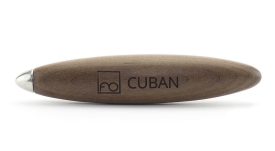








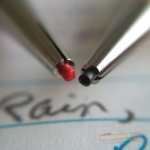
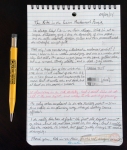

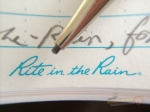



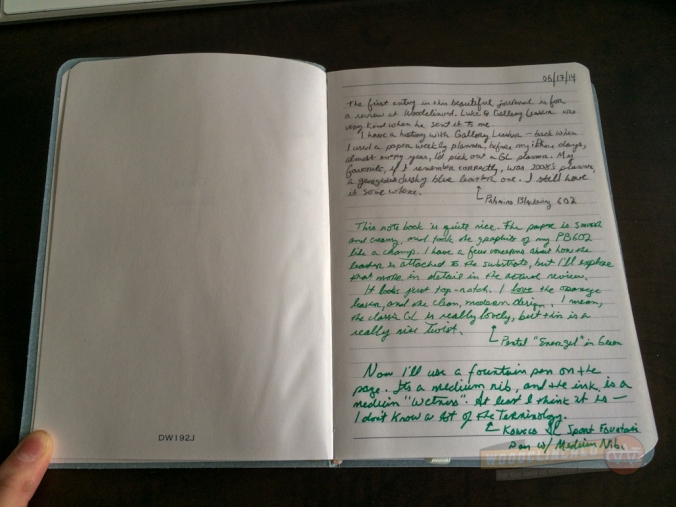



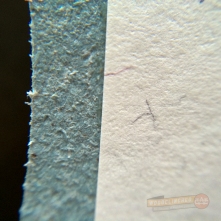
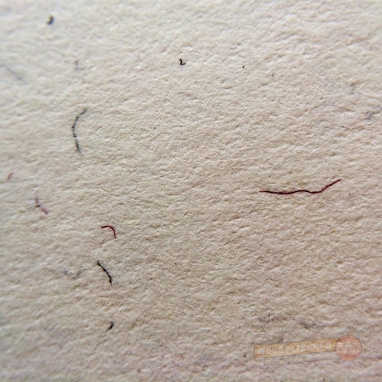


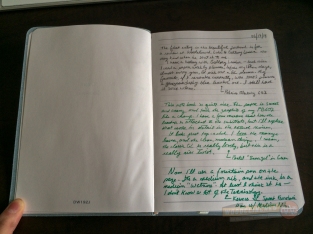

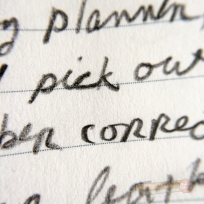

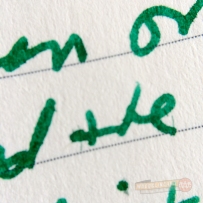
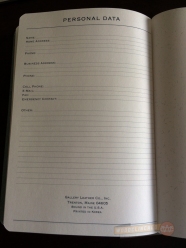
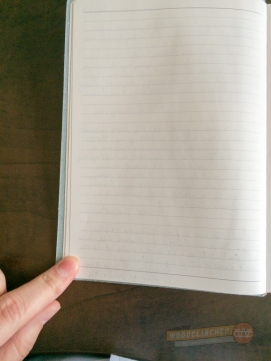



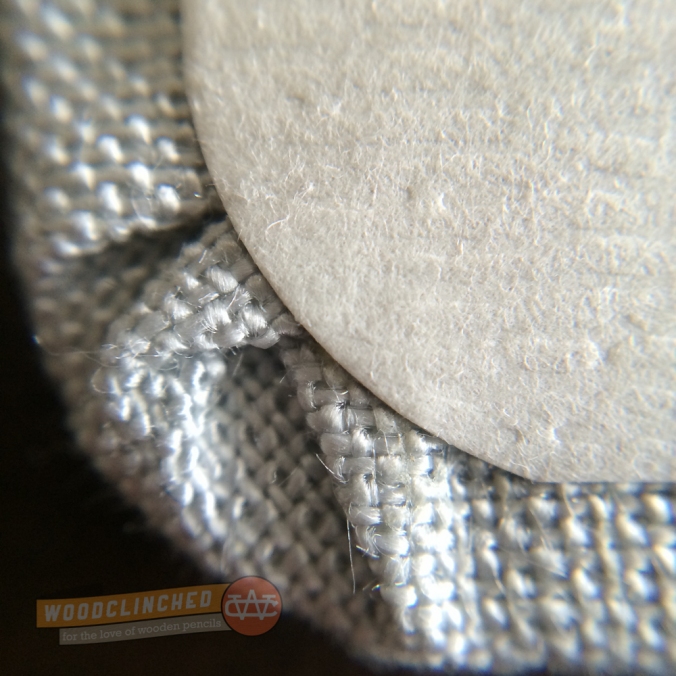
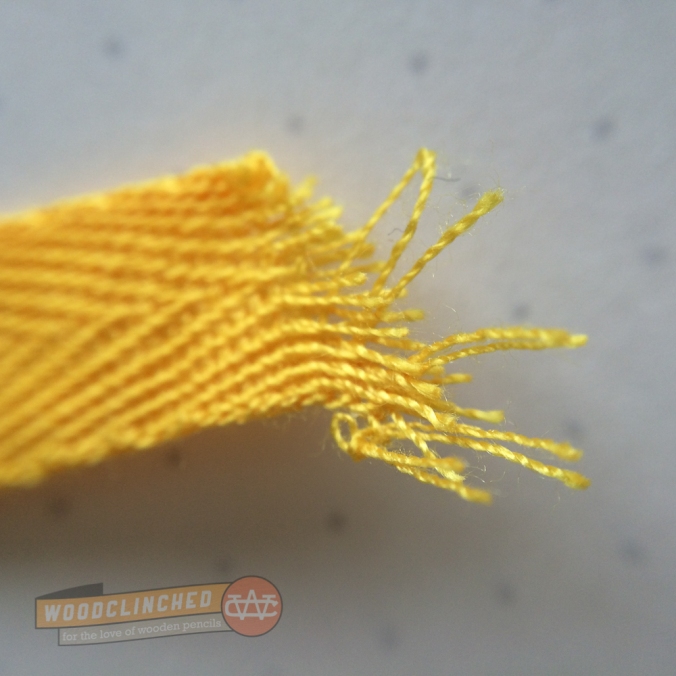
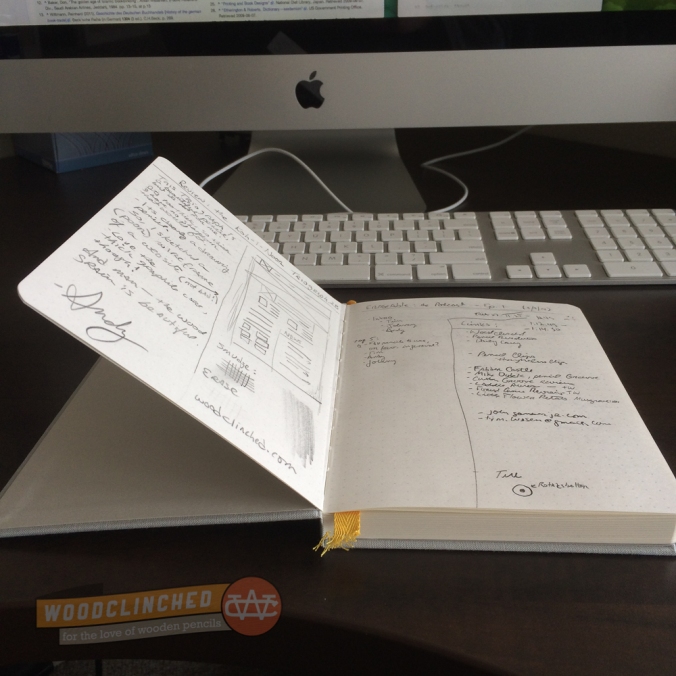









1 comment:
Thursday 7thDecember2017
“Forever Pencil”
https://woodclinched.com/2015/07/05/napkin-prima-review
Post a Comment